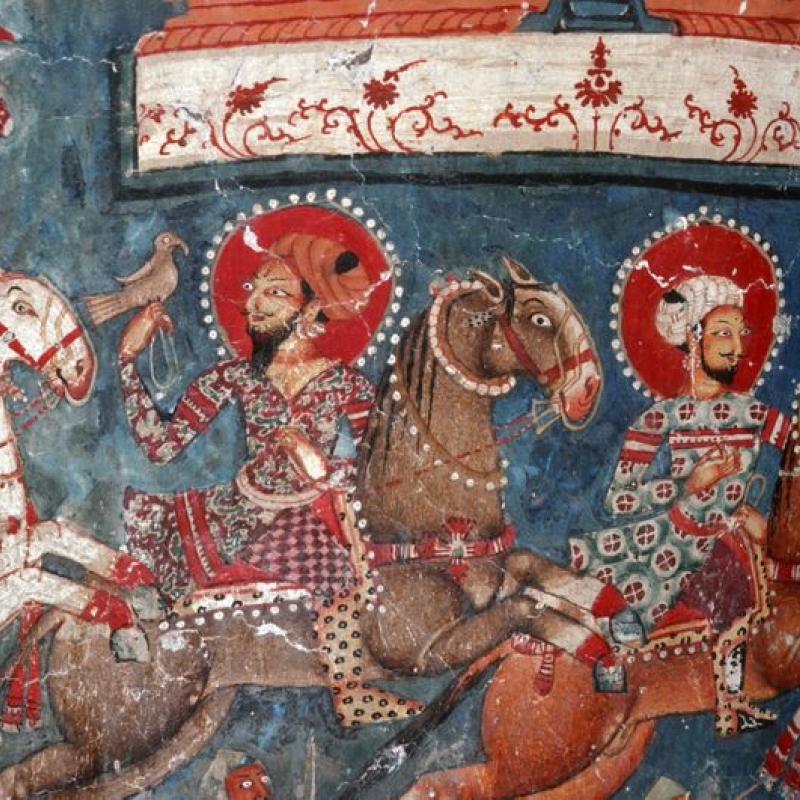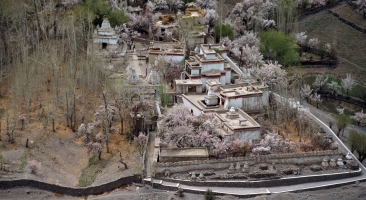The presence of the Himalayas to the south and the Karakoram range in the north makes Ladakh appear isolated. Historically, however, the region has always been connected to the outside world through numerous trade routes. Its neighbours included present-day Tibetan Autonomous Region to the east, Kashmir to the south and west, and Xinjiang, which lies across the Karakoram range in Central Asia. By the late 7th and early 8th centuries, Ladakh became a part of the Tibetan Empire, offering access to the Tibetan armies to the westernmost part of the Taklamakan Desert (Xinjiang). Culturally, this also marked the moment when the first diffusion of Buddhism took place here. The Alchi Group of Monuments in Ladakh, part of which is protected by the Archaeological Survey of India, was a landmark in the important cultural efflorescence which began in the 10th century. This was during the second, and more permanent, diffusion of Buddhism, in the Tibetan regions, especially since the first diffusion in the 7th century lost official support soon after it was introduced. The Alchi Group includes the important monasteries of Alchi, Sumda and Mangyu. The mural paintings within these monuments have acquired international significance and have been the topic of historical scholarship. The two articles in the module written by Marjo Alafouzo and Yashaswini Chandra offer a historical overview of the various cultural influences reflected in the early Buddhist art of Ladakh. In addition, the articles are illustrated by rare images by the photographer Jaroslav Poncar, courtesy the photographer and the Western Himalaya Archive Vienna (WHAV).


